Bobby Franks was just 14 years old when he was kidnapped, bludgeoned, suffocated, and dumped into a culvert outside of Chicago by Nathan Leopold and Richard Loeb, two teens who simply wanted to see if they could get away with murder.
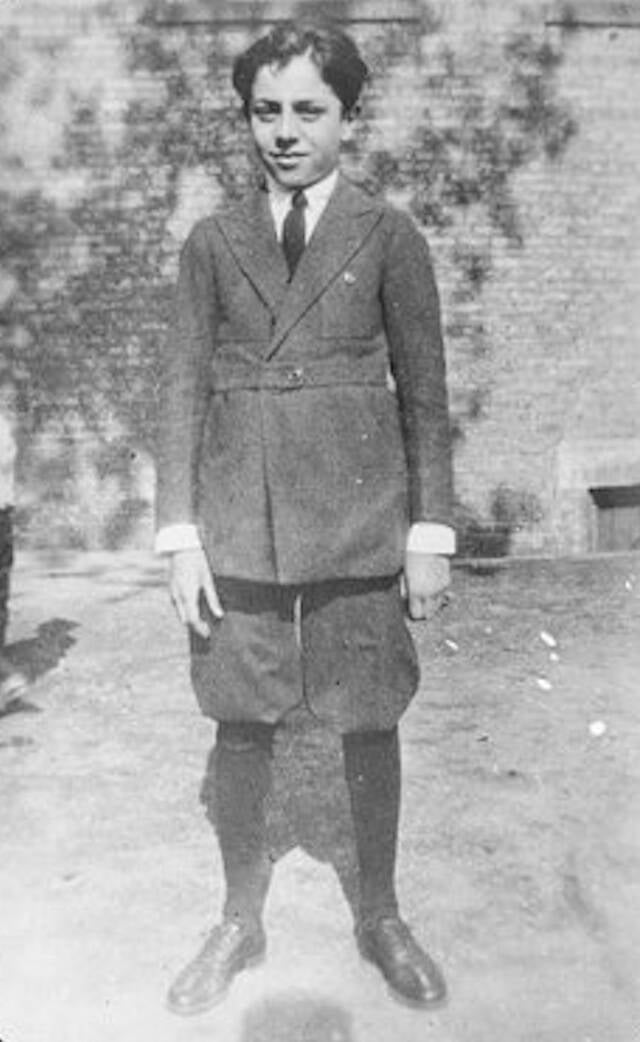
Chicago Daily News Collection, Chicago History MuseumBobby Franks was a 14-year-old debate team champion when Nathan Leopold and Richard Loeb randomly chose him as the victim of their “perfect crime.”
In 1924, 14-year-old Bobby Franks passionately argued against the death penalty at a school debate. “Punishment should be reformative, never vindictive,” the boy declared. His older brother, Jack, argued for the opposite side, but Bobby won the debate with his call for compassion.
Two weeks later, Bobby Franks was dead. He was the victim of a “perfect crime” planned by wealthy teenagers Nathan Leopold and Richard Loeb. The duo kidnapped and bludgeoned Bobby — just to see if they could get away with murder.
Leopold and Loeb then sent a ransom note to Bobby’s rich father demanding $10,000 for the safe return of his son. Of course, Bobby was already dead by that point, but the teens didn’t think his body would ever be found.
Bobby’s corpse was discovered less than 24 hours after his murder, however, and Leopold and Loeb were behind bars within 10 days. They went to trial later that year — and avoided the very death penalty that Bobby Franks had argued against.
Who Was Bobby Franks, The Young Victim Of Leopold And Loeb?
Born into a wealthy family in 1909, Bobby Franks grew up among the stately homes of Chicago’s Kenwood neighborhood north of Hyde Park. His father, Jacob Franks, had amassed a fortune through real estate and investing, and he also ran a watch company. Fellow Chicagoans reportedly called him “Honest Jake” for his fairness when loaning money.
In interviews, friends of the Franks family described Bobby as “bright” but “no athlete,” according to Chicago History Museum’s collection of interview notes from the investigation. A classmate called Bobby a “small, frail kid.”
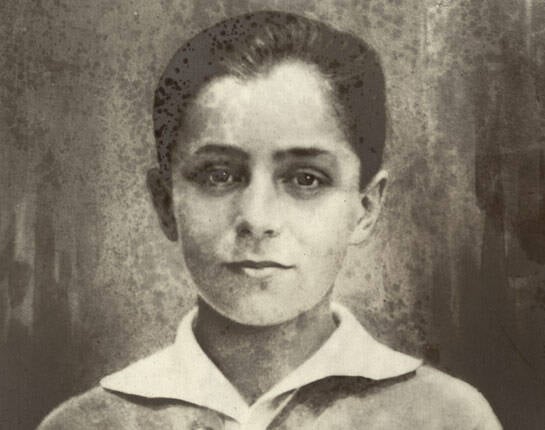
University of ChicagoBobby Franks argued against capital punishment just weeks before his murder.
Bobby followed in his brother Jack’s footsteps and enrolled at Chicago’s prestigious Harvard School for Boys. During his freshman year, Bobby made a name for himself on the debate team, with his school yearbook declaring, “Whosoever attended the Big Debate knows wherein lies this youth’s talent.”
Bobby Franks carried his team to victory during a debate on capital punishment, arguing that mental illness drove criminality and, thus, the state should not execute criminals.
“I ask this: Is it human, is it just for a state, in all its power, to take a man, weak and mentally depraved, and coldly deprive him of his life?” Bobby asked.
At the very moment Bobby was making his award-winning argument, the teenage sons of two other wealthy Chicagoans were plotting a murder. And Bobby Franks became their target.
Nathan Leopold And Richard Loeb Plan The ‘Perfect Crime’
Nathan Leopold, 19, and Richard Loeb, 18, had very similar childhoods. Both were brilliant students born into wealthy families. The boys knew of each other while growing up, but they became close while they were attending the University of Chicago. They both rebelled against society’s expectations — and after their relationship turned physical, the pair began plotting various crimes.
In 1923, Leopold and Loeb robbed a fraternity house, making off with $74, a bottle of liquor, and a typewriter. Then, they began plotting a kidnapping for ransom. They came up with an elaborate scheme that required decoy bank accounts, tossing cash out a train window, and false identities. And to disguise the crime, they planned to murder their victim.

German Federal Archives/Wikimedia CommonsNathan Leopold and Richard Loeb were rich, privileged teenagers who decided they could stage the “perfect crime” to prove their intelligence.
“The next problem was getting the victim to kill,” Leopold confessed to the police 10 days after the murder, according to his official statement.
So, how did Leopold and Loeb settle on Bobby Franks?
After running through a list of potential victims, including their own fathers and brothers, the teens settled on a profile for their target: a young boy who could be easily overpowered and came from a rich family.
Before they’d even selected a target, however, Leopold and Loeb set a date for their crime: May 21, 1924. They bought hydrochloric acid, rope, and a chisel. They typed up the ransom note on the typewriter they’d stolen from the fraternity house six months prior, leaving the address blank for the time being. Then, they drove to the Harvard School for Boys and waited for the perfect victim to emerge.
Inside The Grisly Murder Of Bobby Franks
On the afternoon of May 21, Leopold and Loeb spotted their ideal target: nine-year-old John Levinson. After identifying Levinson as their victim, Leopold rushed to find binoculars to spy on the boy’s baseball game while Loeb slipped away to look up Levinson’s address for the ransom note.
But when the teens returned to the school, Levinson had vanished. That’s when Loeb recognized Bobby Franks, his distant cousin who lived close to the Loeb mansion. Then, the plan changed.
Leopold and Loeb pulled up next to Bobby and offered him a ride home. Bobby initially refused since he was barely more than a block from his house. Then Loeb said, “Well, get in a minute, I want to ask you about a certain tennis racket.”
As soon as Bobby stepped into the car, the teens hit the gas and fled the scene. Within minutes, Loeb struck Bobby with the chisel and stuffed a rag into his mouth. Bobby died in the car, likely of suffocation.
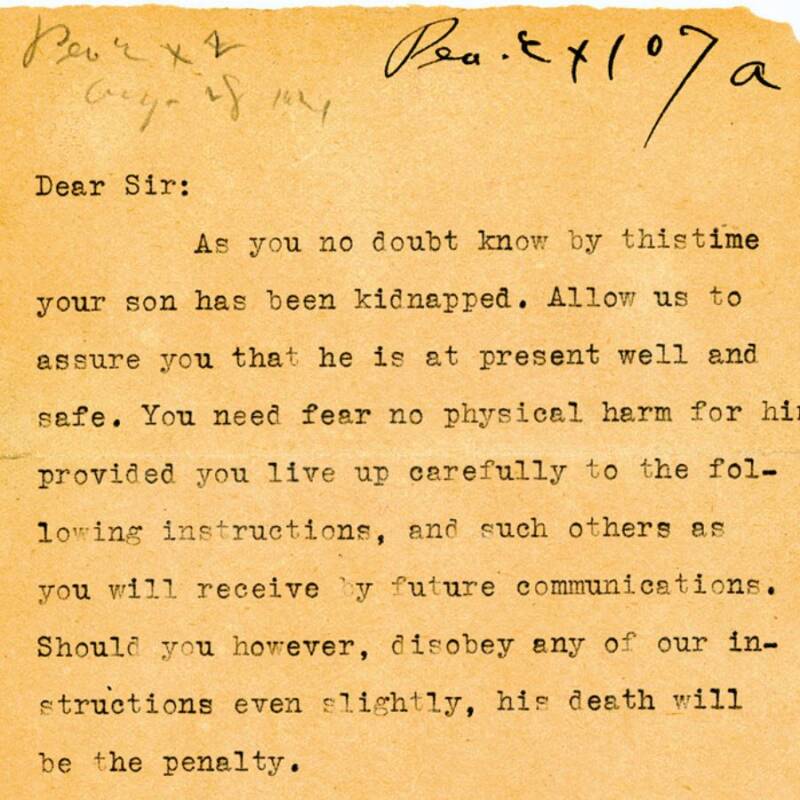
Northwestern UniversityLeopold and Loeb typed out this ransom note on a stolen typewriter before deciding who to kidnap and kill.
Leopold and Loeb drove nearly to the Indiana border with the body of Bobby Franks, where they stripped away his clothes, poured hydrochloric acid on his corpse, and tossed him into a culvert. Then, they posted the ransom note. “Dear Sir,” the note read, “as you no doubt know by this time your son has been kidnapped.”
The note promised the safe return of Bobby Franks in exchange for $10,000 — but Leopold and Loeb never got their money.
How Police Quickly Solved Bobby Franks’ Murder
Early the next morning, a Polish immigrant stumbled across the body of Bobby Franks. Edwin Greshan, Bobby’s uncle, identified the corpse. “It was beyond the question of a doubt in my mind that the boy was Robert,” Greshan testified, according to a 2010 write-up on the case in the University of Minnesota Law Library. Jacob Franks learned that his son was dead while the killers were still trying to extract a ransom, so he never showed up to drop off the money.
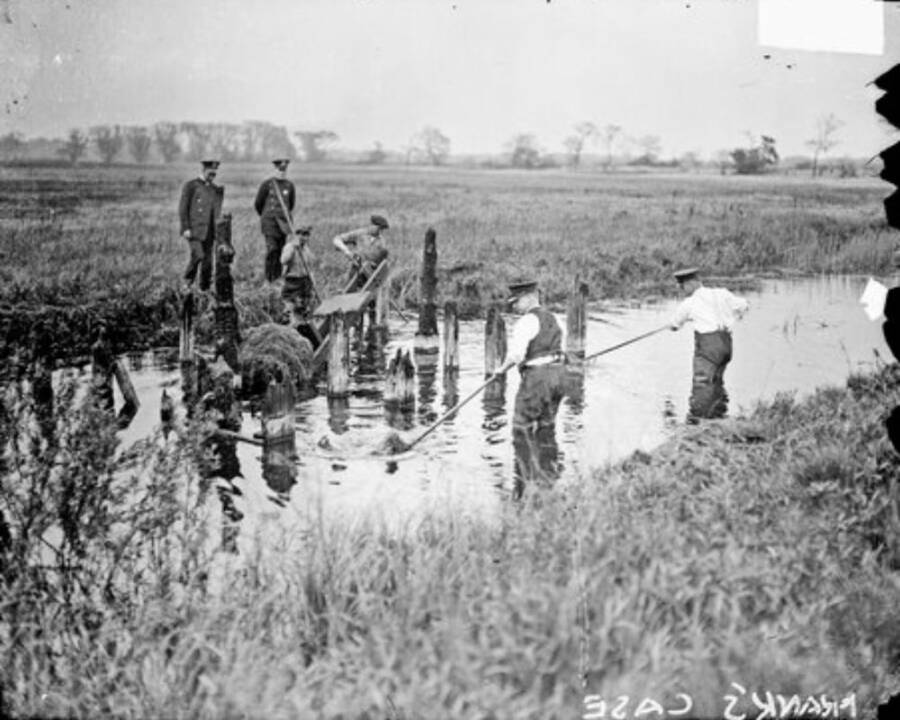
Chicago Daily News Collection, Chicago History MuseumPolice officers quickly identified the body of Bobby Franks and collected evidence that led to the boy’s killers.
It didn’t take investigators long to trace the murder of Bobby Franks back to Leopold and Loeb, who’d unintentionally left a trail of evidence for sleuths to follow.
The night of the murder, Loeb threw the chisel he’d used to bludgeon Bobby from the window of his car, where a night watchman turned it in to police within the hour. The teens also cleaned blood from their rental car on Leopold’s driveway in the middle of the day.
What’s more, Loeb bragged to his reporter friends, “If I was going to murder anybody I would murder just such a cocky, little son-of-a-bitch as Bobby Franks.”
The crime scene also held numerous clues about the killers that led police to Leopold’s home just four days after the crime. A game warden had named Leopold, an ornithology enthusiast, as a common visitor to the forest preserve where Bobby’s body had been found.
Within days, a rare, expensive pair of glasses served as the final nail in the coffin for Leopold and Loeb. Only three people in Chicago owned a pair — and one of them was Nathan Leopold.
Police arrested Leopold and Loeb, who confessed to the crime on May 31, 1924. However, both of them claimed the other had killed Bobby Franks. They faced a judge several months later in what some have called the “trial of the century.”
The Franks Family Grapples With Bobby Franks’ Death
Leopold and Loeb ultimately pleaded guilty to kidnapping and murder. As the judge weighed the sentence, Bobby’s older brother, Jack Franks, told reporters what he thought.
“They should be hanged,” Jack declared. While Bobby had argued against capital punishment, his death convinced Jack that some crimes deserved the ultimate penalty.
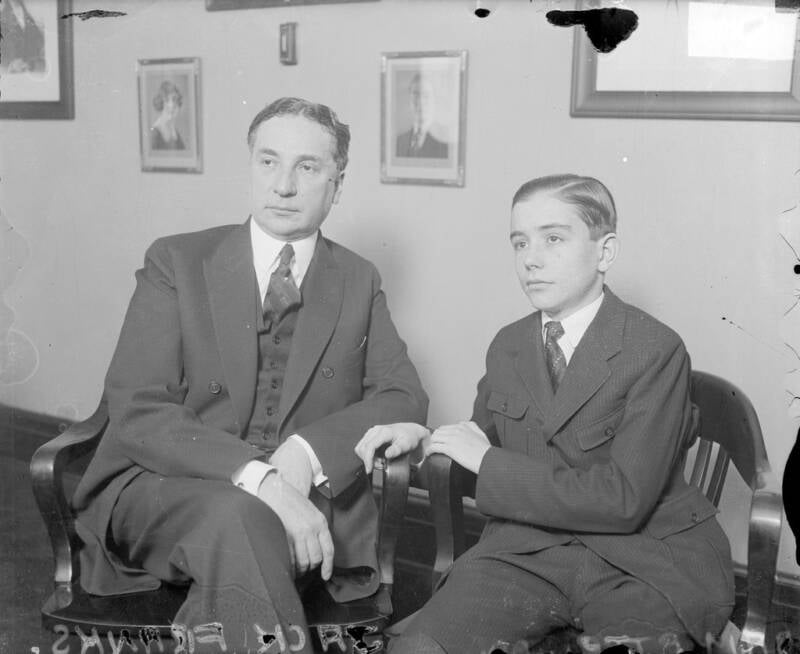
Chicago Daily News Collection, Chicago History MuseumJack Franks, the brother of Bobby, sits with Chicago attorney Samuel A. Ettelson.
Ultimately, Leopold and Loeb each received a life sentence plus 99 years in prison for the crime of murdering Bobby Franks. Loeb died in a prison fight in 1936; Leopold lived long enough to earn parole in 1958 after 33 years behind bars.
Bobby’s father, Jacob Franks, mourned his son’s death. “He was the flower of the family, the idol of my wife’s heart,” Franks told the Chicago Herald and Examiner in June 1924. “We built so many hopes on him — and now he’s gone and nothing we can do or say will bring him back.”

German Federal Archives/Wikimedia CommonsJacob and Jack Franks attend an inquest about Bobby Franks’ murder in June 1924.
However, Jacob Franks also had sympathy for Leopold and Loeb’s families, in particular, “the men who must realize now what sort of boys their sons are.”
Still, “my son is gone,” Jacob Franks said, “and their sons are here.”
Bobby Franks was one of many victims whose story was overshadowed by his killers. Next, read about the victims of Ted Bundy. Then, learn more about the boys and men Jeffrey Dahmer murdered.





